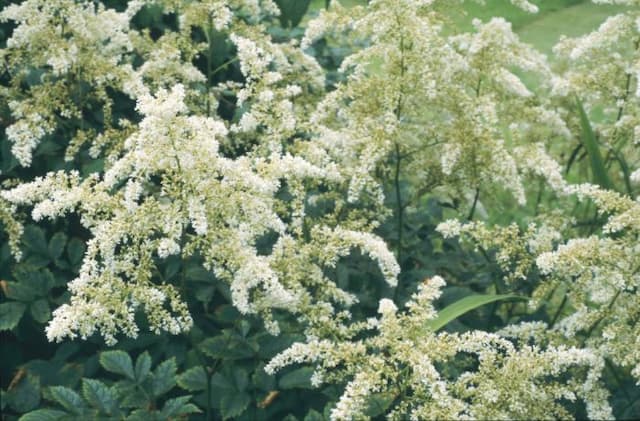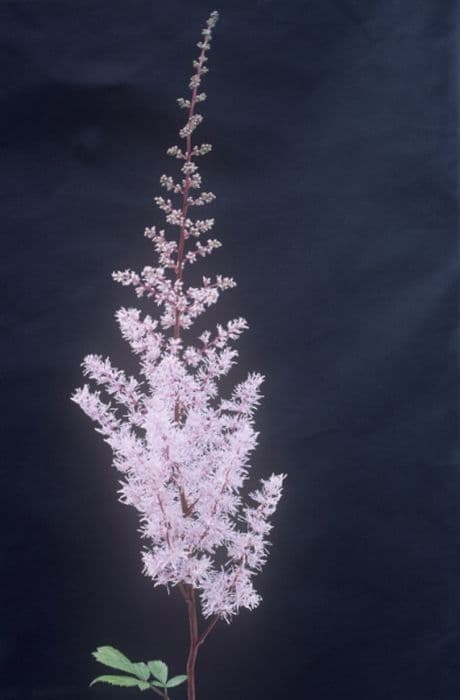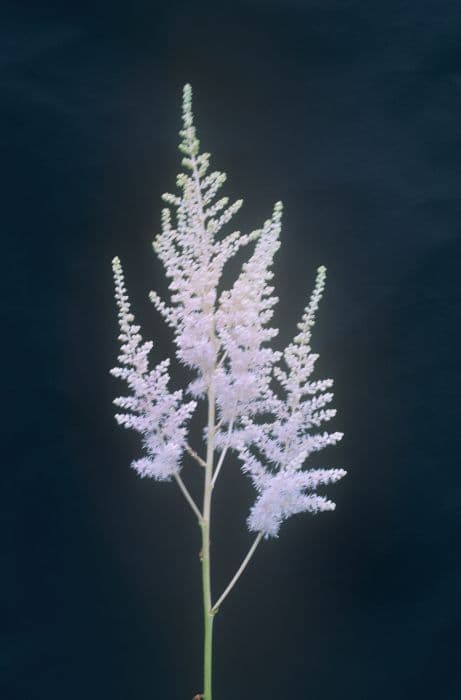Pigsqueak Bergenia 'David'

ABOUT
Bergenia 'David', commonly known as Elephant's Ears due to the shape of its leaves, is a perennial plant characterized by its bold and glossy foliage. The leaves are typically a deep green color, which can turn to a rich bronze or reddish hue during the colder months, adding a touch of warm color to the garden throughout the year. The plant also produces clusters of eye-catching pink flowers that rise above the foliage on sturdy stems, typically blooming in the spring. These flowers can attract various pollinators to the garden, enhancing the plant's aesthetic and ecological appeal. The overall appearance of Bergenia 'David' is robust and lush, making it a popular choice for gardeners looking to add texture and year-round interest to their garden spaces.
About this plant
 Names
NamesFamily
Saxifragaceae
Synonyms
Pigsqueak, Elephant's Ears, Bergenia
Common names
Bergenia 'David'.
 Toxicity
ToxicityTo humans
The Bergenia, commonly referred to as 'Pigsqueak' due to the sound its leaves make when rubbed, is generally considered non-toxic to humans. There are no well-documented cases of poisoning from ingesting parts of this plant, and it is not known to cause any severe symptoms if consumed. However, as with any plant material, individual sensitivities and allergic reactions are possible, so it's advisable to avoid ingesting plant parts unless they are known to be safe.
To pets
The Bergenia, commonly known as 'Pigsqueak', is also not known to be toxic to pets such as dogs and cats. It does not appear on toxic plant lists provided by organizations such as the ASPCA (American Society for the Prevention of Cruelty to Animals). Just like in humans, no severe symptoms are expected if pets ingest parts of this plant. However, always exercise caution and prevent pets from eating plants as a general safety rule, since individual animals might have different sensitivities or allergic reactions.
 Characteristics
CharacteristicsLife cycle
Perennials
Foliage type
Evergreen
Color of leaves
Green
Flower color
Pink
Height
1-3 feet (0.3-0.9 meters)
Spread
1-2 feet (0.3-0.6 meters)
Plant type
Herb
Hardiness zones
3
Native area
Asia
Benefits
 General Benefits
General Benefits- Attractive foliage: Bergenia 'David' has large, rounded leaves that can add a lush, green texture to garden spaces.
- Drought tolerance: Once established, it is relatively drought-resistant, requiring less frequent watering than some other garden plants.
- Seasonal interest: It produces bright pink flowers in spring, adding color to the garden when many other plants are just beginning to grow.
- Low maintenance: This plant requires minimal care once it is established, making it a good choice for both novice and experienced gardeners.
- Cold hardiness: It is capable of surviving in colder climates, making it a versatile choice for gardens in various regions.
- Ground cover: Its growth habit makes it good for covering the ground, suppressing weeds, and reducing soil erosion.
- Attracts pollinators: The flowers of Bergenia 'David' can attract bees and other pollinating insects, which are beneficial for the garden ecosystem.
- Deer and rabbit resistant: The plant is typically resistant to deer and rabbits, which can help protect your garden from grazing damage.
 Medical Properties
Medical PropertiesThis plant is not used for medical purposes.
 Air-purifying Qualities
Air-purifying QualitiesThis plant is not specifically known for air purifying qualities.
 Other Uses
Other Uses- Bergenia 'David' can be used as a natural dye, as the leaves can produce colors ranging from yellow to reddish-brown when used in fabric dyeing processes.
- The leaves of the Bergenia can be utilized in crafting, particularly for creating plant-based prints or stamps by painting the leaf and pressing it onto paper or fabric.
- This plant can serve as a protective ground cover, reducing soil erosion in sloped gardens due to its dense, evergreen foliage.
- The thick leaves of the Bergenia have been historically used as bookmarks, where their durability keeps them from being easily damaged in books.
- Bergenia leaves can be used as a natural insulation material in small garden structures, owing to their large size and density.
- In frost-free regions, Bergenias can be grown in containers and moved indoors to add greenery during the colder months.
- The plant makes an ideal habitat for beneficial insects, providing shelter and sometimes food for creatures like ladybugs and bees.
- Bergenia 'David' can be incorporated into floral arrangements, especially using the foliage as a lush, green backdrop for colorful flowers.
- Its robust nature makes it a suitable plant for creating themed gardens, such as fairy or gnome gardens, where its large leaves can represent trees or shrubs on a miniature scale.
- The Bergenia can be placed near outdoor seating areas as its evergreen leaves contribute year-round visual interest and texture to garden design.
Interesting Facts
 Feng Shui
Feng ShuiThe plant Bergenia is not used in Feng Shui practice.
 Zodiac Sign Compitability
Zodiac Sign CompitabilityThe plant Bergenia is not used in astrology practice.
 Plant Symbolism
Plant Symbolism- Endurance - Bergenia 'David', commonly known as Bergenia, symbolizes endurance due to its hardy nature and its ability to thrive in harsh conditions.
- Protection - The thick, leathery leaves of Bergenia can imply a protective quality, representing shelter and safety.
- Adaptability - Bergenia plants are able to adapt to a variety of climates, which symbolizes versatility and the ability to thrive in different environments or situations.
- Healing - In herbal medicine, some species of Bergenia are used for their purported healing properties, which allows them to be associated with healing and restoration.
 Water
WaterElephant's Ears should be watered regularly to maintain evenly moist soil, especially during their growing season in spring and summer. Generally, providing about 1 inch of water per week is advisable. However, you may need to water more frequently during hot, dry spells or if the plant is in a container, as soil in pots tends to dry out faster. Always check the top inch of soil; if it feels dry to the touch, it's time to water. Cut back on watering in the fall and winter when the plant is not actively growing, allowing the soil to dry slightly between waterings.
 Light
LightElephant's Ears prefers part shade to full shade conditions. An ideal spot would be one that receives filtered sunlight or morning sun followed by afternoon shade. Protect the plant from harsh direct sunlight as it can scorch the leaves, so avoid placing it in a south-facing location where the sun is most intense.
 Temperature
TemperatureElephant's Ears thrive best in temperatures between 60 and 75 degrees Fahrenheit. They can survive temperatures as low as 20 degrees Fahrenheit but will suffer if exposed to temperatures below this range. The plant is cold-hardy and can tolerate frost, but for optimal growth, keep it in an environment that's on the warmer side within the specified range.
 Pruning
PruningPrune Elephant's Ears to remove yellowing or damaged leaves and to maintain a tidy appearance. Pruning can be done at any time of year as needed but is best done in late winter or early spring before new growth begins. This helps to energize the plant for the upcoming growing season and allows for healthier, more vigorous growth.
 Cleaning
CleaningAs needed
 Soil
SoilElephant's Ears 'David' thrives best in a soil mix that is rich in organic matter, well-draining, and slightly acidic to neutral in pH (6.0 to 7.0). A mix containing garden soil, compost, and perlite or sand to improve drainage would be suitable. Ensuring the soil stays moist but not waterlogged is key to its health.
 Repotting
RepottingElephant's Ears 'David' generally requires repotting every 2-3 years. It's best to repot in the spring before the growing season begins. When the plant outgrows its container or the soil becomes compacted, it's time to repot.
 Humidity & Misting
Humidity & MistingElephant's Ears 'David' prefers moderate to high humidity levels but is quite adaptable. Aiming for a humidity level of around 40-60% will keep the plant happy, but it can tolerate lower levels without significant stress.
 Suitable locations
Suitable locationsIndoor
Place Elephant's Ears 'David' in bright, indirect light and maintain moderate humidity.
Outdoor
Plant Elephant's Ears 'David' in partial shade, rich soil, and mulch to retain moisture.
Hardiness zone
3-8 USDA
 Life cycle
Life cycleBergenia 'David', commonly known as David's Elephant Ears, begins its life cycle with seed germination, typically in the spring when soil temperatures warm. Once germinated, the seedling emerges and begins to establish a rosette of basal leaves. These leaves grow larger and the plant develops a root system through the vegetative growth stage. Over time, David's Elephant Ears reach maturity and produce tall flower stalks topped with clusters of pink flowers in the spring or early summer, which are pollinated by insects. After pollination, seeds are formed and dispersed, completing the reproductive stage. In the final stage of its life cycle, the plant may either die back in colder climates or persist as an evergreen perennial where winter temperatures are mild, only to repeat the cycle the following season.
 Propogation
PropogationPropogation time
Spring-Early Summer
The most popular method of propagating Bergenia 'David', commonly known as Heartleaf Bergenia, is through division, which is ideally performed in the spring or early fall. To propagate by division, carefully dig up the plant and gently separate the root clumps into smaller sections, ensuring that each new section has at least one growing point or shoot. These sections can then be replanted at the same depth they were originally growing. It is important to water the newly planted divisions regularly until they are well-established, but avoid waterlogging the soil as this can lead to root rot. With this straightforward approach, gardeners can effectively increase their Heartleaf Bergenia collection and fill their garden spaces with this attractive perennial.









